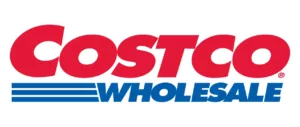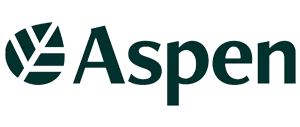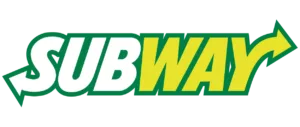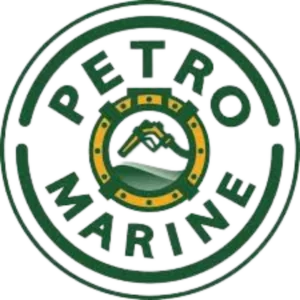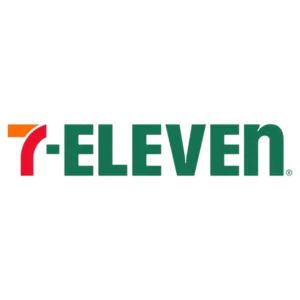A forklift operator once told me the scariest seconds of his week were the ones right after a splash. A valve burped, his forearm started to tingle, and for a moment, he did not know whether to rinse, neutralize, or call for help. The label was smudged, and the “Why Every Business Needs GHS and Hazard Communication Training for a Safer Workplace” secondary container had no sticker.
What calmed him down was not a heroic move. It was training that made the red diamonds, signal words, and Safety Data Sheets feel as familiar as road signs. That is the real promise of strong chemical safety instruction aligned with GHS and HazCom: fewer guesses, faster decisions, and a safer floor for everyone.
Why GHS and Hazard Communication Training Matters On The Floor
When people use this term, they are talking about two parts of a single system working together.
OSHA’s Hazard Communication Standard (HazCom, 29 CFR 1910.1200) requires U.S. employers to classify chemical hazards and give workers clear information through labels, Safety Data Sheets (SDS), and structured training. The Globally Harmonized System (GHS), developed by the United Nations, provides an international framework for the appearance of labels, pictograms, and hazard statements, as well as the categorization of hazards.
U.S. HazCom is aligned with GHS, and in 2024, OSHA updated the rule again to match GHS Revision 7 primarily. Those updates refine how some hazards are classified, how labels are updated, and how SDS details are organized so workers see more consistent, usable information at the point of risk.
What The Standard Actually Requires
At its core, the standard is straightforward: classify, label, document, and teach. In day-to-day operations, that means:
- A written HazCom program that explains who manages chemical information, where SDS are kept, and how labeling works across your site
- A current chemical inventory is linked to SDS, so every container is accounted for
- Labels that use GHS elements such as pictograms, signal words, and hazard and precautionary statements on original and workplace containers, including small containers that follow special rules
- SDS in the 16-section format, accessible on every shift without delay
- Training at initial assignment and again whenever a new chemical hazard appears in a worker’s area, with time for questions and practice reading labels and SDS before an incident occurs
When these pieces are in place, workers know where to look, what symbols mean, and how to act quickly if something spills or splashes.
Key Changes In 2024 And Why They Matter
On May 20, 2024, OSHA issued a final rule to update several elements of HazCom and align them with the more recent GHS revision. The changes include:
- Clearer classification criteria for certain health and physical hazards
- Rules for updating labels on chemicals that are already packaged and released for shipment
- Practical approaches for labeling small containers
- Adjustments that make SDS content more precise and useful
The rule took effect on July 19, 2024, with phased compliance dates. If your training materials, examples, or internal procedures predate these changes, it is time to review and update them to reflect the current requirements.
Why Companies Still Get Cited And How To Avoid It
HazCom remains near the top of OSHA’s most frequently cited standards. Common issues include missing or incomplete labels, outdated SDS, and training that occurred only during orientation with no follow-up.
You can treat these problem areas as an inspection checklist:
- Walk the floor and look for unlabeled or poorly labeled squeeze bottles and secondary containers
- Confirm that SDS are easy to access on every shift, including nights and weekends
- Verify that new chemicals trigger a quick talk or micro-training so workers understand the new hazards and controls
Reducing these gaps is not only about avoiding penalties; it is also about improving overall performance. It is about preventing routine maintenance or cleaning tasks from turning into medical events.
Making Training Stick With Practical Strategies
The most effective OSHA Hazard Communication training combines core concepts with hands-on practice that directly connects to your workplace.
You can structure it this way:
- Begin with GHS and HazCom basics, including how pictograms relate to hazard classes, the meanings of different signal words, and how to review an SDS in under a minute. A short demo of real label reading makes this concrete.
- Add role-specific scenarios. Upon arrival, receiving staff focus on labels and SDS, while production teams work on transfer labels, and maintenance staff rehearse storage, compatibility, and corrosion hazards.
- Use tabletop drills. Provide unlabeled containers along with printed SDS, and then have participants create correct workplace labels based on Section 2.
- Keep Hazard Communication for employees fresh with short toolbox talks that highlight one pictogram, one SDS section, or one procedure at a time.
- Offer language support and visual aids so the material lands with every shift, not only with English-dominant teams.
- Conclude with a brief walk-through: ask participants to identify three items they would label or store differently after the session.
These steps transform abstract rules into practical skills that workers can apply immediately.
What Good Implementation Looks Like
Consider a contract manufacturer that had spotless SDS binders but a blind spot on the mezzanine where secondary containers lived. After a one-hour refresher and a brief labeling workshop, the team rolled out small-container tags and QR codes that pointed to SDS locations.
Supervisors added a weekly two-minute “label scan” to their walk-throughs. Within a month, unlabeled bottle sightings dropped to nearly zero, and the time required for workers to find an SDS went from several minutes to a few seconds. Training was not just a slideshow; it directly changed daily habits.
Who Needs Training And How Often
Anyone who may be exposed to hazardous chemicals during normal operations, maintenance, or cleaning needs instruction under HazCom. That includes people who:
- Handle bulk shipments or totes
- Transfer chemicals between containers
- Clean equipment or spills
- Work in labs or pilot areas
- Maintain systems that store, mix, or dispense chemicals
New hires must be trained at their initial assignment, and additional instruction is required whenever a new chemical hazard is introduced into their work area. Many organizations also schedule an annual refresher by choice or to meet insurance and customer expectations. If your chemical mix or processes change frequently, shorter, more frequent refreshers keep knowledge aligned with current reality.
Role-Specific Learning Paths That Save Time
Different roles face different risks, so focused learning paths are more effective than a one-size-fits-all approach. For example:
- Purchasing and administration staff confirm that suppliers provide current SDS, verify compliant labels, and help keep the inventory accurate
- Shipping and receiving teams use incoming inspections to check labels and locate SDS before materials are released into production
- Production personnel practice transfer labeling, decanting rules, and quick reading of SDS Sections 2, 4, 6, and 8
- Lab technicians review mixture classification concepts and more advanced personal protective equipment routines
- Cleaning and maintenance staff focus on storage compatibility, corrosives, and spill kits
For new hires, a concise GHS course for workers provides them with the essential language and symbol recognition, while role-specific coaching adds the finer points.
Choosing The Right Format And Vendor
Good training meets people where they are. Blended delivery often works best: self-paced eLearning for foundational knowledge, followed by short, hands-on practice in the actual work area.
When you evaluate GHS and Hazard Communication Training, ask:
- Is the content updated to reflect OSHA’s 2024 Hazard Communication (HazCom) revisions?
- Does it show real labels and SDS examples, not just definitions and slides?
- Are small-container and secondary-container labeling scenarios included?
- Can it be tailored to different roles and languages?
- Does it document attendance, quiz results, and the time spent on questions to support audit trails?
A program that handles these details will be easier to defend during inspections and more meaningful for workers.
Quick Wins You Can Tackle This Week
You do not need a full overhaul to start improving chemical communication. A few quick steps can have an immediate impact:
- Post a one-page GHS pictogram reference at every transfer and mixing point
- Add QR codes near SDS binders or digital stations so workers can pull up the right sheet on a phone or tablet
- Run a five-minute “label scan” during shift change and correct issues on the spot
- Tag small containers with tethered mini-labels that are hard to lose
- Update the chemical inventory and remove outdated SDS from circulation
- Hold a short briefing whenever a new adhesive, solvent, or cleaner arrives and show its label and SDS to the affected team
- Create a pocket card based on SDS Section 4 with simple “If exposed, do this first” instructions
These actions demonstrate to workers that chemical safety is a daily priority, not a one-time concern.
Metrics That Show Training Is Working
Leaders do not need a complex dashboard to tell whether training is effective. A few focused metrics can reflect real risk reduction:
- Average time for workers to locate the correct SDS during spot checks
- Percentage of secondary containers with accurate, legible labels
- Quiz results that use actual site-specific labels and SDS pages
- Number and quality of near-miss reports that mention chemical identification or label issues
- Supervisor walk-through notes on labeling, storage, and container condition
When these indicators improve after training, you can be more confident that your program is doing its job and that knowledge is being effectively disseminated to the floor.
A Safer Floor, One Clear Label At A Time
When people can decode a label at a glance and flip to the correct SDS section without hesitation, they move both faster and more safely. That confidence is built through repetition, clear expectations, and tools that are easy to use in real-world applications.
If you want a ready-to-use approach, look for programs that align with the 2024 rule changes, include realistic scenarios, and pair classroom or online instruction with on-the-floor drills. That combination turns written requirements into everyday reflexes.





